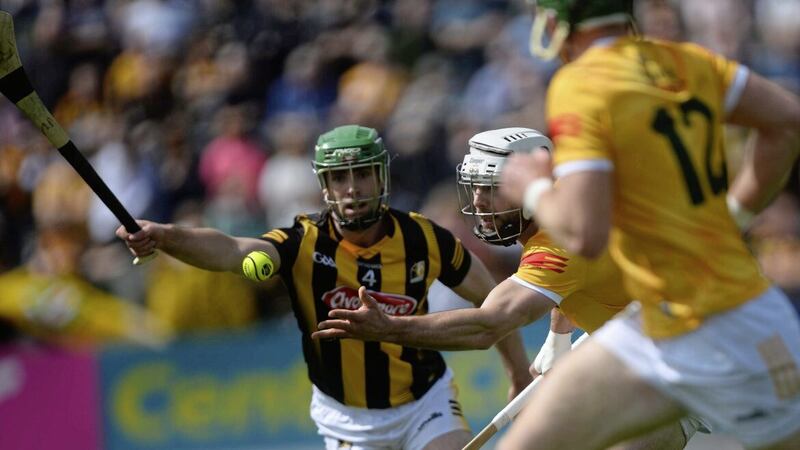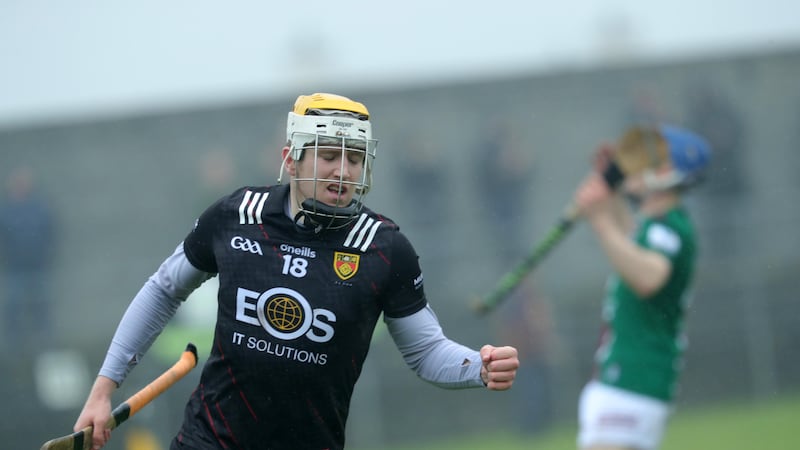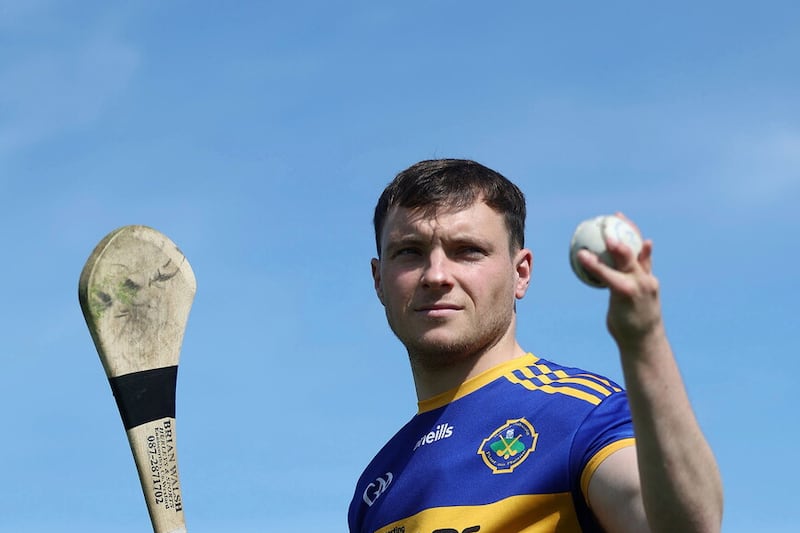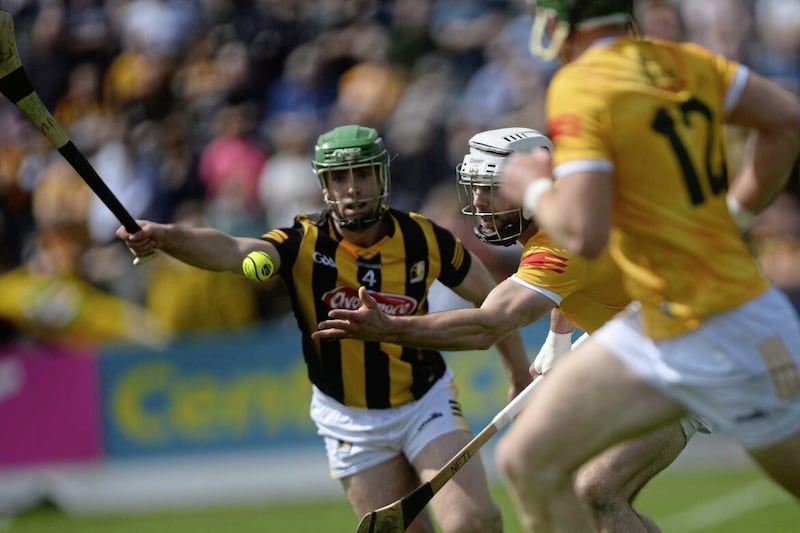DOWN hurling boss Ronan Sheehan believes the new rule that will be trialled to police the handpass in hurling has the right motives but perhaps the wrong solution.
The Standing Committee on the Playing Rules (SCPR), chaired by Professor David Hassan, has proposed that a new experimental handpass rule be adopted at Higher Education Freshers level in response to the flouting of the current handpass rule in hurling.
Few observers of the small-ball game dispute that hurling has a problem with the handpass – with so many teams throwing the ball rather than striking it – but there isn’t a consensus around how to solve it.
Both Sheehan and Antrim manager Darren Gleeson have recently bemoaned examples of their opponents throwing the sliotar.
The new rule trial to be introduced at Freshers level will ask players to strike the ball with their non holding hand or hurley.
However, Sheehan thinks tapping the ball with the hurley or handpassing with the non-holding hand will prompt a series of unintended consequences and give rise to more untidy passages of play.
“It means there will be more and more rucks in terms of what this new rule entails,” said Sheehan.
“If you have to play the ball off the hurley then you’re slowing down the game. How does a player do that with three players around him?
“The player will drop it on the ground and you’ll have another ruck, so there are going to be unintended consequences.
“As coaches you’ll be telling players to get around the man with the ball, get on top of the hurley so he can’t play it and all he can do is drop it on the ground.
“I think this new rule has the right motives – I’m not sure the solution is the correct one.
“I think this is being done for all the right reasons. I don’t think the GAA does these things just for the sake of it; they are genuine GAA people that sit on these committees and they’re trying to improve what they think are problems in the game. And the handpass is a problem.”
So, what would Sheehan do in a bid to stop teams throwing the ball?
The Newry Shamrocks man proposes that referees blow up such indiscretions more often during, say, the National League – even at the risk of ruining the flow and spectacle of matches – with the hope that coaches will begin to insist on the proper handpass action.
“The only way to resolve it is to blow up all the fouls for a single year so it sickens everyone and it would probably ruin the spectacle of the game if we did that for a year.
“Trialling something in the Fresher league won’t make a difference. If you’re losing three frees in a row and they’re put over the bar and you lose a big match, like an All-Ireland semi-final, then you will certainly think about doing the handpass properly.
“But we know the uproar that will be on The Sunday Game if that was to happen and referees would be accused of not letting the game flow. So, you’re caught between a rock and a hard place.”
Sheehan added: “It’s very difficult for the referee because if he starts to blow all that up, he’s blowing up maybe 12-15 fouls in a game and people are shouting at him for stopping the game.
“What people forget is a good handpass is a skill in itself. DJ Carey was able to handpass the ball 25 or 30 yards. The beauty of the handpass is it creates space. The art of what handpassing was about has almost been lost.
“I would hate to see us move to a situation whereby we remove the skill of the handpass, we raise the white flag and say that you can throw the ball.”
Wexford referee James Owens, who has officiated three All-Ireland SHC finals, believes that there needs to be more distance between the hand and the sliotar than there currently is when players execute the handpass.
“Most of the time you mightn’t see the action itself so you have to give the player the benefit of the doubt,” said Owens.
“[I’d be in favour of] something like four to six inches [distance]…At the moment, if the ball moves half an inch from the hand before being struck, that’s okay. The rule states definite striking action but I think it’s too vague to be policed properly.”
Even if the new playing rules – both in football and hurling – were successful at Higher Education level, they would still have some hoops to jump through, including the winning the hearts and minds of congress, before they became enacted permanently.








